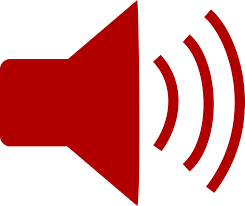 The FDA jumps to approve when Apple approaches. This sounded familiar, and merits a look back to a blog post from September 2018: “When Apple speaks, a puzzled market listens. When Apple announces, industries crane their necks to hear. Last week they announced two features of a new watch, ECG monitoring and fall detection. In July, Tim Cook apparently did not want to get into the world of FDA regulation. Well, that was then – or he just wasn’t saying. In this new watch, both the ECG feature and fall detection have received FDA clearance within 30 days of applying, startling some observers who noted that closer to 150 days was more typical for a medical device. Healthcare observers are concerned that false positives from ECG readings could propel people unnecessarily to already-overloaded Emergency Rooms. To date, the Apple Watch may have been of greatest interest to 40 year old males. Interestingly, 70% of cases of atrial fibrillation are among the 65+ population. Does Apple really want the 65+ population to buy an Apple watch?” Did it happen? Nope.
The FDA jumps to approve when Apple approaches. This sounded familiar, and merits a look back to a blog post from September 2018: “When Apple speaks, a puzzled market listens. When Apple announces, industries crane their necks to hear. Last week they announced two features of a new watch, ECG monitoring and fall detection. In July, Tim Cook apparently did not want to get into the world of FDA regulation. Well, that was then – or he just wasn’t saying. In this new watch, both the ECG feature and fall detection have received FDA clearance within 30 days of applying, startling some observers who noted that closer to 150 days was more typical for a medical device. Healthcare observers are concerned that false positives from ECG readings could propel people unnecessarily to already-overloaded Emergency Rooms. To date, the Apple Watch may have been of greatest interest to 40 year old males. Interestingly, 70% of cases of atrial fibrillation are among the 65+ population. Does Apple really want the 65+ population to buy an Apple watch?” Did it happen? Nope.
Fast forward to the present. Was the media hype worth it? Not really. And why did the FDA offer clearance so quickly? Could it be effective lobbying? Apple watch penetration among the 65+ is still low compared to other age demographics – and the firm’s target audience is still ages 20-45. The primary demographic suffering falls? One in four aged 65+, and it is the leading cause of injury. Today’s fall related technology market for older adults has moved well beyond the Apple Watch, now beginning to migrate to room-based detection versus wearable on the body – and even starting to use data to predict fall risk.
Hearing aid feature in Air Pods – they did it again. The media response was predictable. Apple’s announcement about FDA approval of the “clinical grade hearing aid feature in Apple AirPods” was received enthusiastically in the Wall Street Journal. Wow, this feature enables the AirPods to double as a hearing aid and CBS News called it a game changer! But hold on, is it a hearing aid or an ear bud with a hearing aid feature? One that has a six hour charge life, versus 70 or more hours?
Oh, but maybe something important will happen. Maybe the built-in hearing test will cause people to evaluate their need for hearing aids. Really? The buyers of Apple AirPods are younger, with adoption the highest among teens. Perhaps these teens have some noise-induced hearing loss. Connecting those dots, then: teens with hearing loss who own Apple AirPods and use any of the features that Apple will (in the future) roll out, could find benefit from the hearing aid ‘feature’. But it is difficult to believe that “audiologists expect it will be the best low-cost option for most Americans who need hearing aids but don’t wear them.” And then there is the explicit idea that older adults will benefit, particularly in loud restaurants. Hmmm. As with all of the hype- first, think-later product announcements, expect the hearing aid industry, both over-the-counter and with the help of audiologists, will continue to thrive.

 The FDA jumps to approve when Apple approaches. This sounded familiar, and merits a look back to a
The FDA jumps to approve when Apple approaches. This sounded familiar, and merits a look back to a
Comments
Room-based fall detection -- really?
Today’s fall related technology market for older adults has moved well beyond the Apple Watch, now beginning to migrate to room-based detection versus wearable on the body – and even starting to use data to predict fall risk.
...detection in every room? On stairs? On front porch/steps, deck? Away from home? Something with connectivity worn seems a lot more comprehensive risk management. My Apple Watch Series 9 does that -- I never leave home without iPhone so Watch is always connected. I've had a couple plausible false alarms, was easy to assure Watch I hadn't fallen.